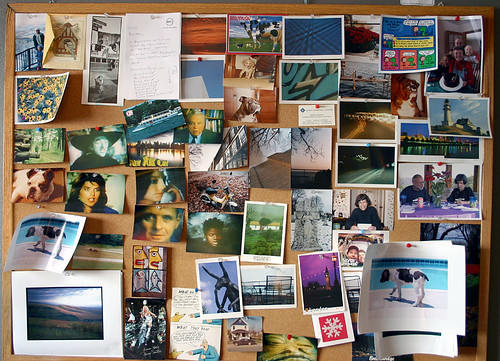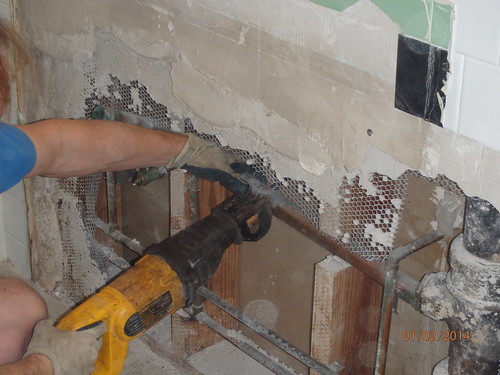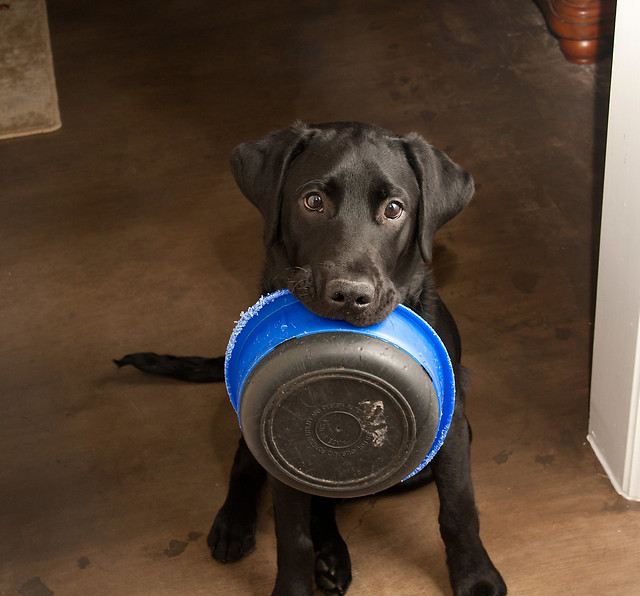Insert here placeholder for dogfooding metaphor
That’s my weak play at irony. I’m fleshing out an idea for a project I hope to start tinkering with; normally I might want to have a bit more to show before talking about it, but oh… the irony.

The name for it came to me while driving around the region yesterday, I think it was on highway 8 on the outskirts of Merritt, BC. I was driving past a field of cows (this has zero relevance). I should keep better track of where these things happen; quite a few when I am lingering in the hot shower. Rarely do my ideas come when I am looking at a screen or a blank sheet of paper.
So it’s called “The Notery” a word play on Notary which it has no direct connection. What it is?
Read on.
This all trends back to maybe the most pivotal idea in terms of the way I go about my work, it’s the reason for the way I teach courses like ds106 where the writing of how/why you made something is more than what you make. It’s why I use my blog, not as a self promotional machine, but a “memory palace” and “outboard brain”.
I turn back to Jon Udell’s description of it, no idea where he got the phrase of “narrating your work”:
Since then I’ve spoken a few times about the idea that by narrating our work, we can perhaps restore some of what was lost when factories and then offices made work opaque and not easily observable. Software developers are in the vanguard of this reintegration, because our work processes as well as our work processes are fully mediated by digital networks. But it can happen in other lines of work too, and I’m sure it will.
My favorite example, from a very different domain, is the historic home preservationist John Leeke. In our interview he eloquently explains how and why he works observably.
It’s also the idea largely of Austin Kleon’s popular bright yellow colored Show Your Work! though to me, his framing is more outwardly focused. You show your work to “get discovered”:
In ten tight chapters, I lay out ways to think about your work as a never-ending process, how to build an audience by sharing that process, and how to deal with the ups and downs of putting yourself and your work out in the world
I was alerted today by Rochelle Lockridge of where this comes up in workplace learning:
“ How Future of Work, Appreciative Inquiry and Working Out Loud Connect With #ESN http://t.co/9NErTrOdio” @cogdog good read.
— Rochelle Lockridge (@Rockylou22) November 23, 2014
This article declares
And finally, the Working Out Loud movement is relatively new and was defined about 3 years ago by Bryce Williams as:
Working Out Loud = Observable Work + Narrating Your Work
So I jump to When will we Work Out Loud? Soon! (that was 2010, I guess that “soon” has not happened yet?). Williams does state that these concepts are related and intertwined, but it’s an idea I can buy into.
Jane Bozarth has used the same idea/title as Austin Kleon to talk of this value (observable work is now maybe a buzz phrase) in her Show Your Work book of how this concept can be beneficial on the workplace.
What does showing work mean? It is an image, video, blog post, or use of another tool, or just talking to describe how you solved a problem, show how you fixed the machine, tell how you achieved the workaround, explain how you overcame objections to close the deal, drew the solution to the workflow problem, or photographed the steps you took as you learned to complete a new task. Some of the most effective examples of showing work offer someone explaining how/why they failed, and how they fixed it. Show Your Work offers dozens of examples of individuals and groups showing their work to the benefit of their organizations, their industries, and themselves.
This is closer to the way I approach it. Yet in most of our work, as writers of published books and papers, presenters at conferences, creators of media, students who write essays, dissertations- the emphasis is always on the Final Thing. That’s the end goal.
Modified from cc licensed flickr photo shared by One Thousand Words
But we usually ignore, discard all of the process that led to the Final Thing. The road, the path, the sketches, the discarded ideas, the eureka moments. It’s what I love about movies on DVDs. I always want to go back after watching and find the Extras. The director’s commentary. The shorts on film location. The discussion of the music. The outtakes. Alternative endings. The cutting room floor.
We cut all of that out of our academic, and research work.
I know from my own experience, that in the middle of a project- everything is forefront, relevant. Because it occupies my regular focus. Ask me 6 months later, a year, 2 years… it’s all fuzzy. That’s how our brains (sort of) work.
Do you know what you were doing on November 26, 2008? Right off the top of your head? I do not, but my blog does (I had skyped from Iceland to Brian Cosby’s 5th grade class).
What were you thinking about on April 24, 2012? Right off the top of your head? I do not, but my blog does. (I was pondering the notions of layers in media and the power of noticing the world as part of my ds06 class).
What kind of experiments in your work were you doing May 13, 2005? Right off the top of your head? I do not, but my blog does (I was trying out RSS parsers for the site that eventually evolved into Feed2JS).
It’s not the perfect lifelogger, but its pretty damned useful to me. And not just for recall, it helps me to look back and reflect on what I was thinking and how I was going about solving problems.
So this is how I have posed it in presentations and conversations.

creative commons licensed ( BY ) flickr photo shared by osseous
When you call a plumber to your house, more or less you want the final thing- a leak plugged, a toilet that works.
But do you ever think about asking how your plumber solves problems? Does she rely in manuals, experience, intuition? What does she do when presented an unusual situation? What is her philosophy on tools?
To me is a rich space, opportunity especially in academia, for sharing the “how” we do our thinking and work. In a place where others can see as well.
I had this very conversation, Roger, who has an office in the building here at TRU where I have a space. He asked about my work, and I discussed one bit of trying to create a rich media environment for researchers to share their work. He immediately went to the Final Thing, like a place for publishing papers.
That’s been done many times.
So I gave me blog speech. My plumber story.
I asked him about his field. Mathematical Modeling. I do not even know what mathematical modelers do, or how they do it. I’d like to know where they get ideas, inspiration (maybe everyone thinks in the shower?). And isn’t there a benefit of people in multiple disciplines sharing how they do research… and teaching?
What if there is a light weight way, not necessarily full on blogging, that researchers, academics, teachers, students can share quick notes of their ongoing experience in a place where it can be co-mingled with others?
That’s the Notery Idea.
The vehicle is an approach I used first for the RMOOC site (based here at TRU).
It employs a technology that just about everyone is familiar with, they can use from many devices.
Email.
Boom.
What we rolled into RMOOC as an addition to the now usual RSS Syndication was the “quick post”. Within the Jetpack plugin is a features where you can enable post by email. This was the killer feature that Twitter buried when they deep-sixed Posterous.
You can generate on a per account basis in WordPress, a special email address. Users write a post by sending a message to that address; the subject line becomes the title, the body of the message the post Links, attached or embedded media become part of the post. Among the many features users can add tags. categories via shortcodes in the message.
So what if we developed a community here where people regularly write short email messages about the work they are doing. Or challenges. Or breakthroughs. Or connections. They can consider it a message to themselves.
“I don’t have time to blog” is what I hear a lot. How much time per day do you spend in email? How hard could it be to pry some of that on some regular basis to send one more email?
Of course someone needs to see a value in this. So Notery would have a way to track all the notes form an individual; perhaps some sort of storify sequencer. The value is being able to see ideas and approaches of colleagues. So maybe rather than having authors tag and organize notes, maybe there’s an incentive to explore and connect, so tagging becomes a community activity (remember I am outboard brain mode here).
On a more mechanical level there are a few issues to take on. A typical approach is someone comes to the site, makes or requests an account, it gets set up, the special email address generated, and sent back to them by email.
But we are wanting to make some things that do not require accounts and passwords. And give the site users an option to be as anonymous, pseudonymed, or identified as they choose. So I see them setting this up from a simple one field form where they enter how they want to be identified. The site than generates a unique URL and returns a response to check back within [time frame to be determined].
On the back end we will have to generate a user account with Authoring permissions (this could be automated). “Someone” will then click the button that generates the secret email address. Then when the person returns to check the URL, the email address is provided (and then the link is destroyed).
It’s not totally secure, but.. well enough for now. It’s a proof of concept. Well, it’s my imaginary concept.
But here’s the other thing- those post by email addresses are usually something like randomstuffandnumbers@wordpress.com — and folks here, with FIPPA and all, are leery of services hosted south of the [Canadian] border. So my idea is the email address we give is actually one on our splot.ca domain, and we set that up to be a forwarder to the wordpress.com one. Maybe not th best end around. But it also allows us to change the forwarding address without giving away the actual one.
Even better, on a whim search to see how this can be automated– it can.
Well that’s just the first type jotting Notery for myself, perhaps a bit long for what I am thinking. But I’m eager to start tinkering now.
Yum.


Fascinating concept, and sign me up as a field tester. As a process-oriented composition instructor, I am in the weird position of teaching the process “everybody” says they use (meaning Peter Elbow, Annie La Mott, Natalie Goldberg) to my students, but it isn’t anything how I work. And when I explain how my process works, people say they are intimidated or can’t imagine such a thing, and pretty much I’ve learned to shut up about it.
I’m not convinced people want to hear about process or if they want to write about it and if they do, why. But on the other hand, when I think about such traces, I also think memory, story, and that, I think has value.
Probably you aren’t thinking about it being of particular interest to readers so much as you’re thinking about the value of metacognition?
And the blog looks great!
Just a quick note here as it is time for my morning coffee.
I am a member of group that has recentlycome together. Academics. The members have resisted everything that would mean narrating in public. Somebody had the idea to create a simple email distribution list on JISC servers. It is thriving. They ask for resources, arrange face to face meetings, talk about difficulties and about what they are teaching and how. Over time it now has a group blog and members are being asked on a voluntary basis to write posting no longer thna 500 words. I have been watching with interest how this humble technology has brought peopel together. Like tilde clubs….
If we start where our clients are and they see value, people will change. Too often we judge them for not seeing value. So lovely to see how you are navigating this project. Thye are lucky to have you!
I like it. I’ve been trying to think through smoothing out a different portion of the process. I’ve long wanted to be able to pull my browsing history for a period of time as a div structured HTML chunk for pasting into WordPress. I’ve looked a little into how Chrome stores the data and I don’t think it’d be too difficult. I’m debating adding three buttons for in-process annotation- essentially flagging results and adding notes if desired- something like dead end, key vocabulary addition, and success. Then maybe set up some CSS classes to add color to it.
We’ll see if time/skill meets desire.
That’s typical Tom brilliance. Like reviewing your trails. I like it. Was just looking to see what’s possible you can get it, see http://stackoverflow.com/questions/13369829/access-my-entire-browsing-history-via-javascript ??